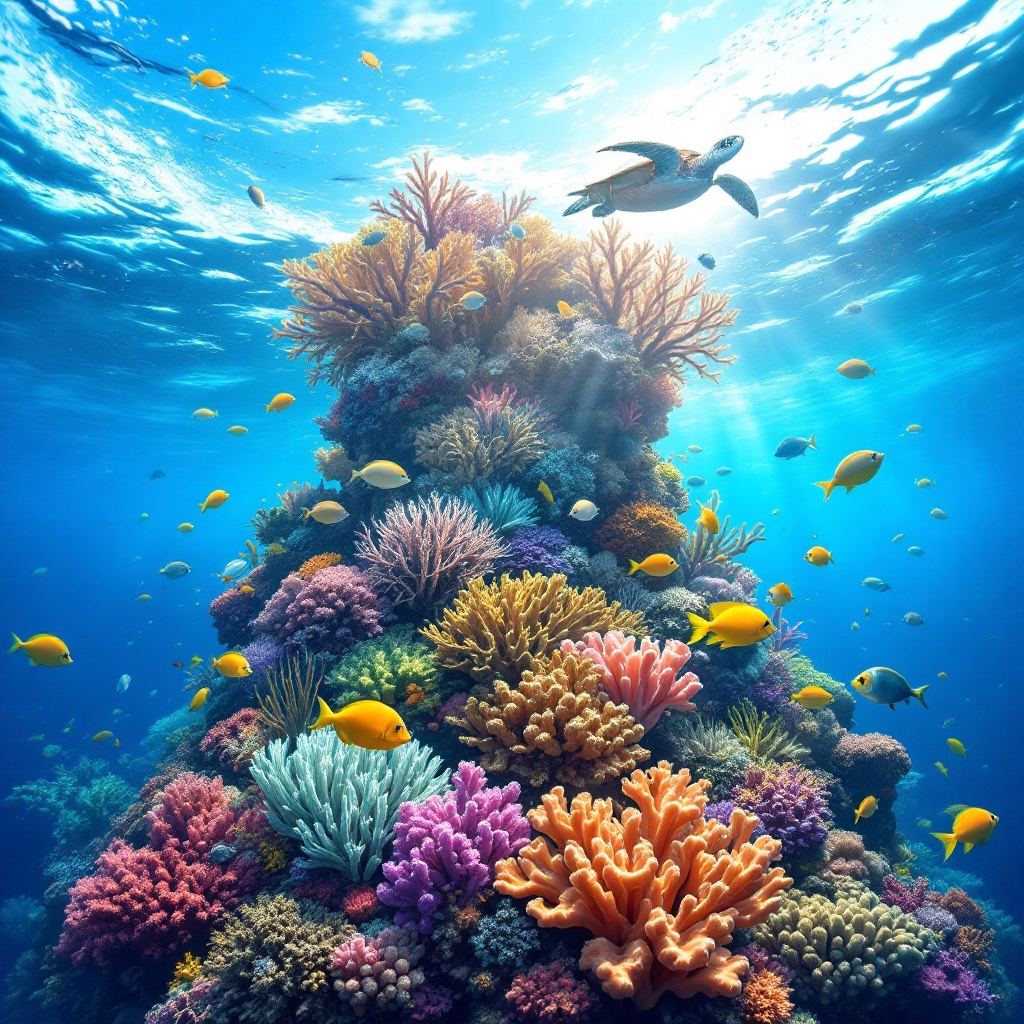Coral reefs, often referred to as the “rainforests of the sea,” are among the most diverse ecosystems on our planet. Their vibrant colors and intricate structures are not only a feast for the eyes but also a critical habitat for countless marine species. However, the alarming decline of these ecosystems due to climate change, pollution, and overfishing has sparked global concern. As scientists and conservationists work tirelessly to protect and restore these underwater wonders, understanding their resilience and the potential for recovery is more crucial than ever.
Coral reefs cover roughly 0.1% of the ocean floor, yet they support 25% of all marine species. This staggering statistic highlights their importance in maintaining biodiversity. Corals are not solitary organisms; they are made up of tiny, soft-bodied animals called polyps, which live in symbiosis with algae known as zooxanthellae. These algae provide corals with the majority of their energy through photosynthesis, giving the reefs their stunning colors and contributing to their growth.
However, despite their beauty and ecological importance, coral reefs are under siege. Rising ocean temperatures, primarily due to climate change, have led to widespread coral bleaching. This phenomenon occurs when corals expel the zooxanthellae, losing their color and vital energy source. Bleached corals are more susceptible to disease and mortality, leading to significant declines in reef health.
The Threats Facing Coral Reefs
Coral reefs face a multitude of threats, and understanding these challenges is key to developing effective conservation strategies. Climate change remains the most significant threat, with rising sea temperatures causing widespread bleaching events. The impact of these events was starkly illustrated in 2016 when a mass bleaching event affected 91% of the Great Barrier Reef, one of the largest and most iconic coral reefs in the world.
Pollution is another critical factor contributing to the decline of coral reefs. Runoff from agriculture, industrial waste, and plastic pollution introduces harmful chemicals into marine environments. These pollutants can lead to algal blooms, which compete with corals for space and resources, ultimately suffocating them.
Overfishing and destructive fishing practices also pose significant threats. The removal of key species can disrupt the delicate balance of reef ecosystems. For instance, the decline of herbivorous fish populations can lead to an overgrowth of algae, which can smother corals and inhibit their growth.
Coral Resilience and Adaptation
Despite these challenges, there is hope. Research has shown that some coral species exhibit remarkable resilience and adaptability to changing conditions. For instance, certain corals can acclimate to higher temperatures, allowing them to survive in warmer waters. Scientists are studying these resilient species to understand the genetic and physiological mechanisms behind their survival.
Moreover, restoration efforts have gained momentum in recent years. Innovative techniques such as coral gardening and assisted evolution are being employed to enhance the resilience of coral populations. Coral gardening involves cultivating corals in nurseries and transplanting them back onto degraded reefs. This method has shown promise in restoring damaged ecosystems and promoting biodiversity.
The Role of Marine Protected Areas
Marine protected areas (MPAs) play a crucial role in safeguarding coral reefs. These designated areas help reduce human impacts, allowing ecosystems to recover and thrive. MPAs can enhance biodiversity, increase fish populations, and improve the overall health of marine environments. Successful examples of MPAs include the Phoenix Islands Protected Area in Kiribati and the Papahānaumokuākea Marine National Monument in Hawaii, both of which have demonstrated the importance of protection in promoting coral resilience.
Community Involvement and Education
Community involvement is vital in the fight to protect coral reefs. Local communities, especially those that depend on reefs for their livelihoods, play a critical role in conservation efforts. Education and awareness campaigns can empower communities to take action, whether through sustainable fishing practices or participating in reef restoration projects.
Programs that promote ecotourism can also provide economic incentives for conservation. By valuing coral reefs as a source of income through tourism, communities can be motivated to protect these ecosystems rather than exploit them.
Future Directions for Coral Conservation
The future of coral reefs depends on a multifaceted approach that includes science, policy, and community engagement. Policymakers must prioritize climate action to mitigate the effects of global warming on marine ecosystems. International cooperation is essential, as the ocean knows no borders, and issues such as overfishing and pollution require collective action.
As we look toward the future, the resilience of coral reefs offers a glimmer of hope. With continued research, innovative restoration techniques, and the active participation of local communities, we can work towards a future where coral reefs thrive once again. The journey is long and fraught with challenges, but the beauty and biodiversity of coral reefs are worth the effort.
In conclusion, coral reefs are not only vital to marine life but also to human existence. They provide food, protect coastlines, and contribute to the economy through tourism and fishing. As stewards of the ocean, we must do everything in our power to protect and restore these incredible ecosystems. The story of coral reefs is one of resilience, and with our support, they can continue to flourish for generations to come.
